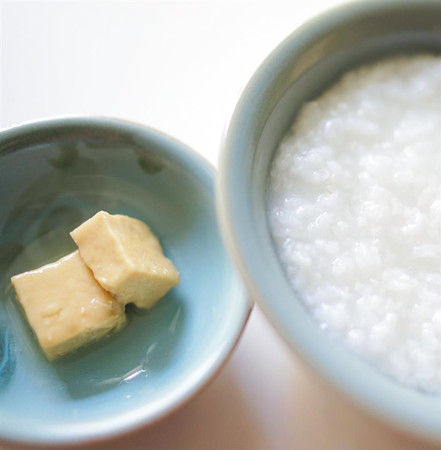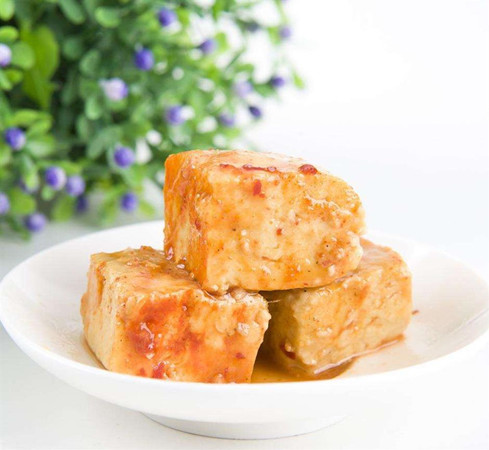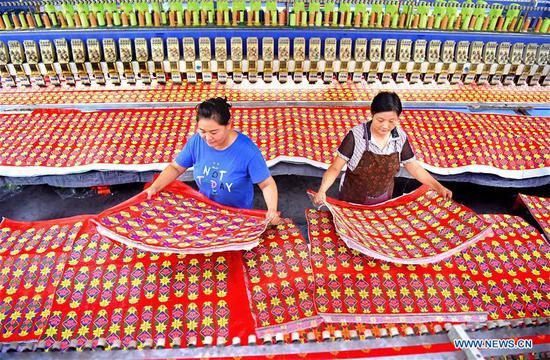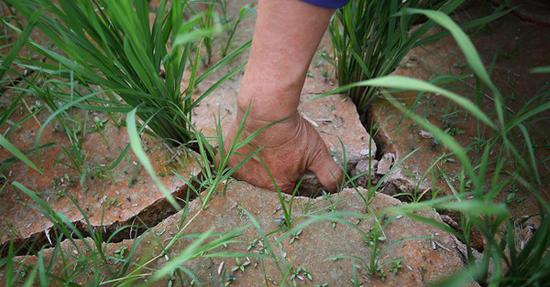
Congee and fermented tofu is a classic Chinese comfort food. (Photo/Shine.cn)
Everlasting Flavors is a series profiling the condiments, sauces and spices that define Chinese cooking.
Chinese people have a lot of unique living habits, and one of them is always keeping a jar of fermented tofu in the fridge.
In Shanghai, you can go rich and bold for breakfast by snacking on fried goodies like youtiao (fried dough stick) and dabing (flatbread), or opt for a much lighter yet comforting meal of a bowl of congee, half a cube of fermented tofu and a small plate of pickled vegetables.
“Growing up I’ve always been eating rice congee and fermented tofu. The simplest meal is a true comfort food dear to my heart. The congee can warm up the stomach instantly while the salty fermented tofu can stimulate the taste buds, especially in the hot summer when the appetite is not good,” said Judy Wang, a Shanghai local who enjoys fermented tofu.
Congee and fermented tofu can also be a comforting late-night snack before bed.
A little goes a long way, it’s sufficient to dip the tip of the chopsticks to pick up a tiny bit of fermented tofu. Never eat a mouthful of fermented tofu because the overwhelming saltiness could destroy the beauty of the condiment as well as the palate.
Let’s take a quick look at how fermented tofu is made
The intriguing condiment hailed as “Chinese cheese” is creamy and briny with a unique wine flavor gained from the fermentation process.
The technique of tofu fermentation was created in ancient China, but the exact time is unknown. Fermented tofu became popular in the Ming Dynasty (1368–1644), and the scale of production was quite large at that time.
Fresh tofu that is cut into small cubes is arranged in wooden boxes at 15 to 18 degrees Celsius to maintain a certain level of humidity so mold would start to grow on the tofu over the first two days. Five days later the pieces would be covered.
Traditional methods cannot control the quality and type of mold, hence the quality of the fermented tofu fluctuates, but modern production in a strict bacteria-free environment inoculates the good mold to avoid cross contamination of other cultures.
The next step is spreading one layer of salt in between two layers of tofu cubes, which are arranged in jars and sealed with another thick layer of salt on top for an eight-day fermentation process. The salt separates water from the tofu to harden the texture and inhibit the growth of the microbes while preventing the tofu from going bad.
Brine is the crucial element in making fermented tofu because it determines the flavor of the final product. Composed of Chinese wines such as yellow or rice wine, or sorghum liquor, alongside spices such as peppercorn, star anise and cassia, the tofu cubes are soaked in the brine to absorb the flavors.
The whole process looks quite easy, and there are people who try to make fermented tofu from scratch at home using firm textured tofu that won’t break up easily when immersed in liquid.
Besides being a delicious condiment, fermented tofu, as a soy product, contains minerals such as calcium, magnesium, iron, potassium and zinc, though the high sodium level should also be noted.

Fermented tofu across China
Fermented tofu, also called furu, is sold across China in every supermarket as a staple of the Chinese lifestyle. It’s the “vegetarian Chinese cheese” that not only brings more vibrant flavors to dishes and meals, but also boasts some health benefits from the fermentation.
The most common types of fermented tofu are the hongfang (red fermented tofu), baifang (white fermented tofu) and qingfang (green fermented tofu).
“Baifang and hongfang are what I keep in the fridge throughout the year, they are simple yet versatile condiments. I also add them into stir-fries sometimes because it brings more complex flavors to the vegetables and meat,” said Zhou Li, who often cooks with fermented tofu.
Baifang originated in Guilin in the Guangxi Zhuang Autonomous Region and is regarded as one of the “three treasures of Guilin” alongside Sanhua wine and Guilin chili paste.


















































